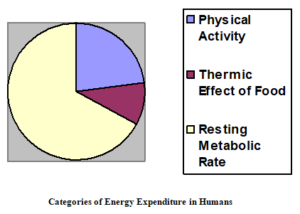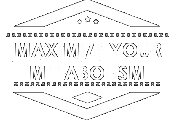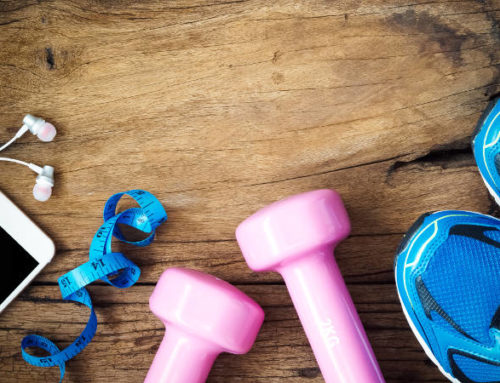“Knowing how to burn fat through a faster metabolism will catapult you towards your weight-loss goals. Whereas, obsessing only on reducing the intake of calories leads to demoralizing setbacks. This article explains why; and more importantly, how to burn fat.”
Everybody knows how to lose weight and stay thin. Do you recall seeing the same sentence earlier in a previous article on how to lose weight fast? I’ve reiterated it here because, for years, Americans have paid less attention on how to burn fat. Instead, they have obsessed on only one side of the crucial dieting equation: the number of calories they consume.
In one diet program after another, proponents have tried—and failed—to prove that reducing the intake of calories is the one and only answer to weight loss.
- Surveys show that 140 million Americans (about half of the population) are on diets right now but that 60 percent of Americans are overweight!
- Even worse, past studies reveal that a full 95 percent of those who are dieting will fail to achieve weight loss.
To date, more than a hundred different dieting strategies have been devised. And virtually all of them claim that reducing calories is the Holy Grail, whereas nothing could be further from the truth. Knowing how to burn fat through your metabolism is far more important. Here’s why.
We humans expend energy (calories) in three ways:
- by increasing our resting metabolic rate,
- by engaging in physical activity,
- and through the process of thermogenesis (the burning of calories that occurs when we digest and metabolize our food).
Resting Metabolism
More than half of the calories we expend during the day are burned up by a process known as resting metabolism or basal metabolism, which consists of the burning of calories for the purpose of producing energy to sustain life and maintain normal bodily functions such as respiration and circulation.

In an average male, resting metabolism is responsible for as much as 60 to 75 percent of the total calories burned. As we shall see in the articles on exercise, however, resting metabolism is highly dependent on lean muscle mass. And resting metabolism will form one of the key components on how to burn fat. We’re going to exploit it in order to raise your metabolism over the long term.
Physical Activity
The second component of metabolism is the number of calories burned through physical activity. Obviously, this is the element that most exercise professionals harp on relentlessly—and with good reason. This is one of the most significant variables in how to burn fat off.
How many calories do I burn when exercising?
The number of calories your burn during physical activity is dependent upon the frequency, intensity, and duration of exercise, and totals 10 to 30 percent of the total calories burned daily.
Most studies show that overweight men and women are less active, on average, than their physically trim counterparts. This is, of course, one of the major factors that cause people to become overweight in the first place. And to remain that way once they get there.
Thermic Effect Of Food
The third element of metabolism is due to the thermic effect of food (TEF). TEF has to do with the energy we use up just by virtue of eating, digesting, and metabolizing food. As you might expect, this effect is most pronounced shortly after eating a meal. Indeed, the more calories we consume, the more calories we burn—in absolute numbers, at least.
In normal people, TEF raises the total energy expenditure of the body by more than 40% of the resting metabolic rate (RMR) within one hour after eating a 1500-calorie meal. That’s about the size of a good Thanksgiving Day pig-out. The TEF typically peaks about an hour to an hour and a half after a meal. But it can remain elevated for up to six hours, depending on how calorically sinful your repast.
But don’t get the wrong idea here: you cannot lose weight by eating greater quantities of food!
The TEF is never enough to fully digest and work off all the calories consumed at a meal. In fact, it doesn’t even come close.
Adaptive Energy Expenditure
There is one other element of metabolism that bears mentioning, and that is adaptive energy expenditure. This refers to the ability of the human body to adapt to stress or change. Scientists have not completely understood the effect of this component. But we do know that it varies from person to person. And that it can play an important role in the energy-balance equation.
Because our body is highly adaptable, it actually responds to undesirable conditions by decreasing or increasing the amount of energy required for any given activity.
That’s why people in third-world countries are able to survive on a mere bowl of rice each day. Their bodies have responded to the lack of food by rigidly conserving energy and lowering their metabolic rate.
The Reality Of Energy Balance
Being in a state of energy deficit, whether it comes about through decreased calorie consumption or increased calorie expenditure, will result in weight loss for some people.
How many calories do I need to burn to lose a pound?
To lose one pound of body weight, you must use up 3500 calories.
The problem is that the more often a person experiences a severe energy deficit, the lesser the effect it has in the way of weight loss.
This adaptive effect is well documented through the experience of yo-yo dieters. The more they deprive themselves of food, the more likely their bodies will store whatever nutrients they can muster up. Paradoxically, their self-deprivation makes it all the more difficult for them to lose weight.
Our body’s survival mechanisms respond to intentionally inflicted calorie deficits just as they would during times of famine. That is, they become more efficient at using food by burning calories more slowly.
What this means for yo-yo dieters is that their metabolism slows down and they store the excess nutrients in the form of fat, saving it in case there’s another deficit sometime in the future.
The best way to combat this natural tendency is to know how to burn fat through systematically increasing your metabolism by every means possible. And we teach you to how to burn fat through fast metabolism right here on this website.
The Adaptability Of The Human Body
The human body is an incredible machine. It can withstand a great deal of abuse. And in time it will acclimate to almost anything that’s inflicted upon it.
We can train our:
- muscles to grow.
- (As when bodybuilders abuse their muscles by constantly increasing the amount of weight they lift, which forces the muscles to acclimate and grow in order to survive)
- brains to hold more information.
- (The more we read and the more experiences we have, the stronger the neural pathways in our brains become and the more information our brains can process)
- lungs to hold more air.
Perhaps one of the most incredible examples of human adaptability is the power to train your metabolism to either speed up or slow down. And we’re not talking about a process that takes months or years. We’re talking about physiological changes that can be achieved in a matter of days. As healthy human beings, we can change the way our digestive system and our metabolism handle the food which enters our stomach. And ultimately, we can train our bodies in how to burn fat.
Before a camel goes into the desert, it can store enough water to survive for weeks without a fresh supply. How does it do this? Well, I can assure you, the camel doesn’t know how this happens, nor does it care. As long as it doesn’t die of thirst, I’ll bet it never even notices. A camel’s system simply has a survival mechanism that triggers the sensation of thirst and increases the capacity of certain muscle cells to hold water. And the result? A rise in the amount of water the camel can drink and store.
Our Metabolic Systems Work The Same Way
If we deprive ourselves of water for some reason, our survival mechanism will cause certain parts of our bodies to store more water than usual.
- In fact, we will end up storing almost as much water as we take in.
- On top of that, the process of perspiration will slow down, thereby causing us to retain even more water. This makes us look “puffy”.
- It also creates an atmosphere that is not conducive to achieving a heightened metabolism.
The solution is simple: In an earlier article on body cleansing you learned a simple formula that helped you determine how much water your body needs. Now all you have to do is supply it with at least that amount of water every day. That will literally wash away the old, built-up water.
The miracle of the human body doesn’t stop there. If we can pull off this trick with our water-storage sites, then why not do a similar thing with the parts of the body where we store our carbohydrates, our proteins, and, yes, even our fats? The answer is that we can. And I’m sure you’ll just love the way it’s done: to train your system to shed fat, you simply need to trick it into believing that it will always be supplied with as much fat as it desires.
As great as it sounds, there is somewhat of a fallacy in this line of thinking. If the process of losing weight were really this easy, all you would have to do to reduce your fat content would be to ingest an abundance of fat, right?
WRONG!
Simply stated, what you have to do is see to it that your body gets the percentage of fat that it needs, not the percentage that your mind desires!
Moreover, you have to follow a similar approach when it comes to your intake of carbohydrates and proteins. After all, too much of any nutrient will be converted to fat. And that will simply hinder the entire fat-burning, metabolic-boosting process.
Remember, this is a regimen to train your body in how to burn fat. As with just about any kind of training, it may seem difficult, if not impossible, at first. Believe me, many of my clients have felt this way. However, what they quickly (and happily, I might add) discover is that once they take the plunge and get started on their new diet, they notice great results almost right away, and that’s what keeps them motivated.
Then, during their first week, they make a few minor modifications that help to tailor their diet, their exercise routine, and other aspects of their health and fitness so that they blend perfectly into their lifestyle.
To train our bodies on how to burn fat, we will need to teach our metabolism what to crave, what to use as fuel, and what to discard as waste. Our bodies now crave anything and everything that we enjoyed as kids. Unfortunately, since those days our metabolism has made a 180-degree turn-around in terms of what it needs to survive.
Too Many Carbohydrates
It is my estimate that nearly 90 percent of us have been eating meals that consist primarily of carbohydrates (breads, cereals, grains, pasta, fruits, and sugars) throughout our lifetime. This has trained our systems to crave and use carbohydrates as fuel. Then when we consume carbohydrates, our bodies assume that we are about to engage in strenuous activity.
We are, in essence, like Pavlov’s dog. Carbohydrates ring our bell, and our bodies respond just as they’ve been trained. They secrete a hormone known as insulin which will either:
- (a) digest and use the newly acquired carbohydrates as energy,
- (b) properly store the excess in the liver or the muscles, or
- (c) deposit the excess in the form of fat.
The normal action taken by the body when faced with strenuous exercise is to:
- First use up carbohydrates from the stomach (the last meal eaten that day).
- And then go on to utilize carbohydrates from the muscles and the liver in turn.
- Only as a last resort will the body use up the carbohydrates that have been stored as fat.
How To Burn Fat Through Our Metabolism
To optimize our fat-burning furnace, we must train our metabolism to go through a similar process whenever it sees fat. So that it will use that intake of fat as energy rather than immediately storing it in our cells. Our metabolisms are accustomed to being positively reinforced for using carbohydrates as energy. So this new process may be a rough transition, at least at the start.
But you can rest assured that a successful transition will leave you with a body that uses up both the stored fat and the incoming fat as energy. And when you know how to burn fat through your metabolism, there are some rather nice side effects to all this:
- Your system will chip away at any cholesterol deposits you might have accumulated, and it will make better use of the vitamins you ingest.
- In addition, you will end up with a more abundant supply of vitamins A, D, E, and K, which are known to promote healthier hair and skin.
To accomplish this, you must gradually decrease your intake of carbohydrates. This will force your body to search for alternate sources of fuel.
This decrease of carbohydrates must be accompanied by:
- a gradual decrease of fat intake which will force your body to use stored fat for energy and
- a simultaneous increase in protein intake to ensure that existing muscle is not burned as fuel.
This process is not experimental; it has been demonstrated to work, and to melt off fat. Drastic forms of this approach on how to burn fat, however, are unhealthful. Therefore, I have provided an example diet and weight loss plan for you in a later article on this website.
Self-Monitoring Will Improve Your Success
When decreasing your intake of carbohydrates, your first step is to chronicle just what kind of carbohydrate-eating lifestyle you’ve developed. You can make the whole process easier by using one of those inexpensive journals, or even a small notebook.
For the next seven days, keep a complete record of everything that enters your mouth (food, drink, snacks, gum, etc.). Then go to a quiet place, where no one will disturb you for thirty minutes, and review what you’ve written.
You’ll need to have four different colored markers for this project. Use:
- one color for protein, and circle each and every item that is a major protein source.
- Ex: fish, meat, chicken, and anything else that used to be part of a live animal that has eyes, plus eggs.
- another colored marker to circle all of the sources of carbohydrates among the items listed in your journal.
- This includes any food that originated from plants (fruits, grains, vegetables, and beans) or is sweet tasting (for example, candy, cake, and non-diet soda).
- a third color for foods containing fats and fat products.
- Ex: butter, margarine, oil, mayonnaise, margarine, spray oil products, etc.
- the last colored marker to circle any items that contain a combination of nutrients from two (or all three) of the other categories.
- Examples of this would be fried foods (fried chicken contains both protein and fats) and baked goods (breads and pastries contain a combination of carbohydrates and fats).
Now look and see which colors dominate your list. My guess is that it will be your carbohydrate color and your combination color.
Eliminate All Fats
Next, over the course of the next thirty days, eliminate all of the fats (not just fats and fat products, but also fried foods). And don’t object by claiming that your body needs some fats to survive. Unless you have some type of medical condition that requires you to consume a certain amount of fat (check with your physician if you think you do), you’re going to be getting more than enough fat from the foods you eat, WITHOUT injecting ANY additional fat into your diet.
How much fat do I need per day?
Your daily requirement of fat is only one tablespoonful, yet the average American adult consumes six to eight tablespoonfuls of fat each day.
Remember, our objective in this program is to force your system to metabolize your body’s stored fat (for use in the form of energy) rather than to allow it to head directly for the food in your stomach every time it feels a need to supply you with energy.
Your body has had a valid reason for storing fat: you have been giving it so much fat, over so long a period of time, that you have convinced your body it will need this fuel for future use. And so your body has stored the fat. Your body has only been doing its job. But now we want to convince your body on how to burn fat through increasing your metabolism.
Lower Intake Of Carbohydrates
In addition to cutting out all of the added fat from your diet, you must also lower your intake of carbohydrates over the next thirty days.
- During that time, you’re going to eliminate all breads, pasta, cakes, sweets, sodas, and starchy foods (such as potatoes, beans, and avocados) from your diet.
In the meantime, you’re going to increase your intake of leafy green vegetables (and other colorful vegetables).
- For example, broccoli, peppers, asparagus, and cucumbers. To top this off, you’re going to eat most of them in their clean, raw state. And you’re going to try to get them from the organic section of your grocery store.
As if this weren’t enough, you will also have to look at how all of your foods are prepared.
Commit to not putting anything into your mouth unless it’s baked, broiled, or steamed—or, in the case of vegetables, raw.
If you go out to eat, as we all do from time to time, make sure that whatever food you order adheres to the above standards (it’s really not that hard), and make sure that the person who prepares your food uses as little oil as possible in the baking or broiling process. (It’s best if the chef prepares your food without added oil. But when eating out we must assume that the chef will add a bit of oil just for taste.)
Eliminate Dairy Products
The final aspect of your thirty-day changeover is the elimination of dairy products. The only food that’s allowed in this category is egg whites.
- What this means is that for the next thirty day, you must refrain from consuming milk, cheese, and cream, as well as any and all products derived from those sources.
As an extra gift to your body, stop all alcohol and coffee intake. They’re slowly poisoning your body and your mind by creating adverse chemical reactions.
Time For Your New Metabolism Diet
Knowing how to burn fat through a faster metabolism will catapult you towards your weight loss goals. The next step is to incorporate your new metabolism diet so you can force your metabolism and energy level to increase. >> Next Page (Fast Metabolism Diet Program)






